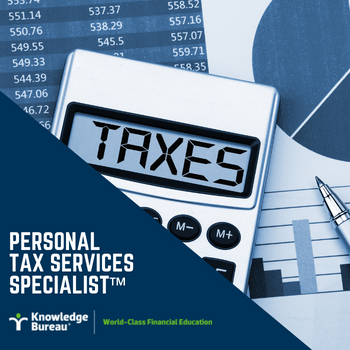Retirement Planning: Should I Defer the OAS?

Evelyn Jacks
We know that taxpayers who turned 65 in 2022 will have some new tax filing nuances when preparing the 2022 tax return this spring. They may qualify for the Age Amount, for example, and, unless they chose to defer their OAS, they’ll be reporting that income for the first time. But will they be subject to a clawback? There’s lots to talk about this tax season. Here’s an overview of potential conversation starters:
Excerpted from Knowledge Bureau’s Professional Advanced Tax Update Course, now available.
Maximizing Public Pensions: Should you be Deferring OAS?
Since July 2013, seniors have had the option to defer receiving their Old Age Security pension for up to five years in a manner similar to the deferral of the Canada Pension Plan. Taxpayers  exercise this option by simply not applying for their pension at age 65.
exercise this option by simply not applying for their pension at age 65.
Those who have already started receiving OAS have six months to elect not to continue. Upon election, the OAS benefits already received will have to be repaid.
Those who begin to receive their pensions later will receive a proportionately larger pension once they begin receiving it. The increase is 0.6% per month for each month of deferral beyond age 65. The maximum increase in OAS (based on deferral to age 70) will be 0.6% x 60 months or 36%.
Who should defer? Taxpayers who would be subject to a full clawback of OAS in the year they turn 65 should elect this option. CRA calls this a recovery tax. OAS begins to be clawed back in 2022 tax year if annual net world income is $81,761 and is full clawed back when income reaches $134,626. Those amounts can change, however, depending on your age, as outlined below. A recovery tax is also payable if the taxpayer is subject to a non-resident tax of 25% or more.
|
Recovery tax period
|
Income year
|
Minimum income recovery threshold
|
Maximum income recovery threshold
|
|
Age 65 to 74
|
Age 75 and over
|
|
July 2022 to June 2023
|
2021
|
$79,845
|
$129,757
|
$129,757
|
|
July 2023 to June 2024
|
2022
|
$81,761
|
$134,626
|
$137,331
|
|
July 2024 to June 2025
|
2023
|
$86,912
|
$141,917*
|
$147,418*
|
The recovery period is 167 months (about 14 years), so most taxpayers would be better off delaying the start of their pension. Those who will live beyond age 84 will benefit from the maximum delay (to age 70).
The current life expectancy (as of age 60) is 87 for men and 89 for women. Only those who have a reduced life expectancy should be applying for OAS before age 70 unless they are investing the pension and can earn an annual return in excess of 7.2%.
|
Example: OAS Deferral
|
|
Issue: Grace turned 65 and deferred her OAS. She decided to begin receiving her OAS at age 67 when she stopped working.
Grace began receiving OAS in the month she turned 67. How much was her first OAS cheque?
Answer: With a delay of 24 months, her OAS benefits were 24 x 0.6% = 14.4% higher than if she had not deferred. Her first cheque (in July 2022) was for $666.83 x 114.4% = $760.19.
|
Bottom Line: Taxpayers who are healthy, have a high-net income and the opportunity to melt down other taxable income sources, such as an RRSP or RRIF should discuss deferring the OAS with a DMA Tax or Retirement Service Specialist.
